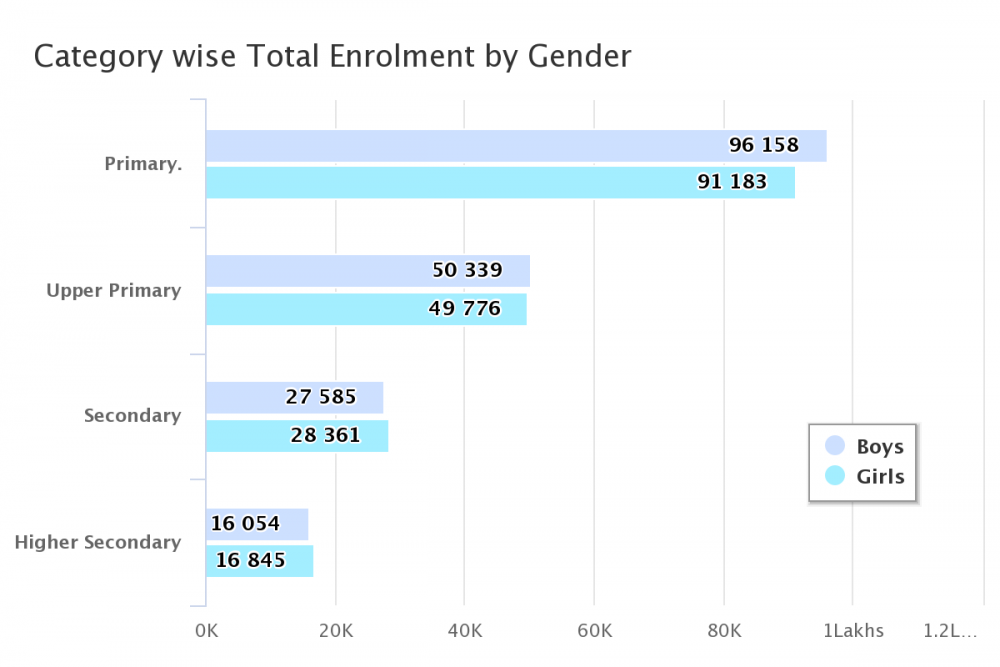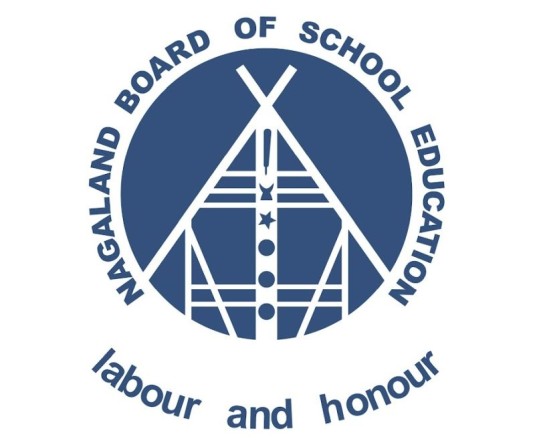Category wise Total Enrolment by Gender in Nagaland as UDISE+ 2018-19, Provisional data posted on ‘School Education Dashboard’ by the Ministry of Education. (Image Source: dashboard.udiseplus.gov.in)

Boys’ enrolment on the decline in secondary levels
Morung Express News
Dimapur | August 23
Literacy and educational attainment are important indicators of a state’s level of human resource development. There has been a considerable increase in the literacy rate in Nagaland with 79.55 % in the Census 2011 as compared to 66.59% during the Census 2001.
However, analysis of data available on the Ministry of Education’s Unified District Information System for Education (UDISE+) dashboard, point to high dropout trends particularly in the secondary and higher secondary levels.
Nagaland has a total of 2,752 out of which 2,007 are government run and 745 are private with a total enrolment of 3,76,301 students.
Out of this, enrolment in the private institutions are higher with 2,38,216 or 63.30% as compared to 1,38,085 or 36.69% in government run schools.
Enrolment wise, there are more boys in primary (ages 6 to 10) and upper primary levels (ages 11 to 12) with 96,158 and 50,339 respectively. 91,183 girls are enrolled at primary level and 49,776 in upper primary.
However, the data on the dashboard indicate that the same phenomenon is not noticed in higher classes with enrolment of 27,585 boys in the secondary level (ages 13 to 15) against 28,361 girls.
At the higher secondary level (ages 16 to 18) too there is higher enrolment of 16,845 girls compared to 16,054 boys.
As per the dashboard, the student-teacher ratio in government schools is at 7:1 (one teacher for seven students) with a total of 19,886 teachers. This is considerably higher than the ratio in private schools where the ratio stands at 20:1 (one teacher for twenty students), with a total of 12,129 teachers.
The student-teacher ratio refers to the number of students for every teacher in a school. This number is about more than just class size — although the two statistics are often tied. The student-teacher ratio reflects the teacher's workload and how available they are to offer services and care to their students.
Lack of ‘inclusive’ infrastructure
The data also indicates that the state still has a lot to achieve in terms of inclusivity of children with special needs. A meager 1.88% of private schools (around 14 out of 745) and 2.99% government schools (around 60 schools out of 2007) have functional toilets for children with special needs, the data showed.
Only 12.48% or 93 private schools are accessible by ramps as compared to 43.35 % or 870 government schools.
However, 96.86% of government schools and 99.43% private schools have separate toilets for girls while 95.44% of the government schools and 99.43% private schools have separate boys’ toilets.
The data also showed that at least 95.16% government schools and 98.45% private schools have running electricity.
With regard to other amenities like libraries, drinking water and playgrounds, private schools fared better than government schools.
Out of a total of 2007, only 461 government schools or 22.97% have library facilities while 292 or 39.19% out of 745 private schools have school libraries.
Approximately 1122 or 55.90% government schools and around 508 or 68.19 % of private schools have provisions for drinking water within the school premises.
A total of 767 or 38.22% government schools and 499 or 66.98 % private schools have playgrounds.
A per the data, 74 or 3.69% government schools and 266 or 35.70% private schools have boundary walls.
Performance Grading Index (PGI)
The PGI for 2018-19, Nagaland attained Grade V category with a PGI score of 601-650, out of a total weightage of 1000.
While it improved its PGI score by 5% to 10%, the most improved domain for Nagaland was Domain 3: Infrastructure (+22.67%). The least improved domain for the state was Domain 4: Equity (+0.87%).
The PGI index was designed to create an environment which would nudge each State or Union Territory to improve its performance continuously. The PGI evaluation provides grades to the States and UTs based on 70 parameters drawn from data available from the Unified District Information System for Education Plus (UDISE+), National Achievement Survey (NAS) of National Council of Educational Research and Training (NCERT), Mid-Day Meal (MDM) website, Public Fund Management System (PFMS) and the Shagun portal.





